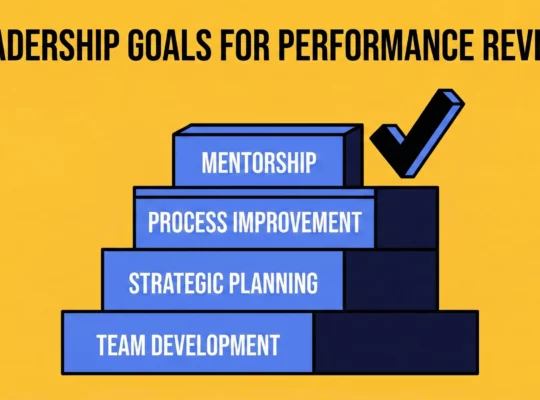A culture of feedback is essential in modern workplaces, fostering continuous improvement and engagement. At Review.jobs, we understand that regular, constructive feedback can transform organizational dynamics, leading to a more motivated and productive workforce. This article delves into the benefits and methods of creating a robust feedback culture, encouraging organizations to adopt these practices for sustained success.
- Definition of Feedback Culture
- Importance of a Feedback Culture
- Key Elements of Effective Feedback
- 6 Steps to Building a Feedback Culture
- Practical Tips for Giving and Receiving Feedback
- Challenges in Implementing Technology for Feedback and Solutions
I. Definition of Feedback Culture
A feedback culture is an organizational environment where the open exchange of ideas, opinions, and suggestions is actively encouraged and valued. It’s a workplace where feedback is seen as a gift, not a criticism, and where continuous improvement is a shared goal. In this type of culture, feedback is integrated into daily operations, becoming a natural part of how work gets done.
Key characteristics of a feedback culture include:
- Openness and transparency: Employees feel safe and comfortable sharing their thoughts and perspectives.
- Mutual respect: Feedback is given and received with consideration and empathy.
- Continuous learning: Feedback is viewed as an opportunity for growth and development.
- Action-oriented: Feedback is used to drive improvement and positive change.
II. Importance of a Feedback Culture
A culture of continuous feedback is essential for fostering employee engagement, driving performance, and fostering innovation. By prioritizing open communication and constructive feedback, organizations can create a positive and productive work environment.
Enhancing Employee Engagement
Increased Motivation
Regular feedback serves as a powerful motivator by validating employees’ contributions. When employees feel their work is recognized and appreciated, their morale and overall job satisfaction increase. This positive reinforcement drives them to strive for excellence and contributes to a more engaged workforce.
Stronger Relationships
Open communication and constructive feedback are fundamental to building strong relationships between employees and managers. By fostering a culture of transparency and trust, organizations create a supportive environment where employees feel comfortable sharing ideas, concerns, and feedback. This leads to improved collaboration, teamwork, and overall job satisfaction.
Sense of Belonging
Feeling heard and valued is essential for employees to feel a sense of belonging within an organization. Regular feedback demonstrates that employees’ contributions are valued and considered, fostering a strong sense of connection to the company. This, in turn, leads to increased loyalty, commitment, and job satisfaction.
Improving Performance and Productivity
Goal Achievement
Regular feedback aligns employees with organizational goals, providing clear expectations and guidance. For an optimal start, set clear goals for new employees and track their progress to ensure alignment with the fluctuating organizational goals. This clarity empowers employees to focus their efforts and make necessary adjustments to achieve desired outcomes.
Skill Development
Constructive feedback helps employees identify strengths and areas for improvement, enabling them to develop new skills and advance their careers. By providing targeted development opportunities, organizations can enhance employee capabilities and overall performance.
Innovation and Creativity
A culture of open feedback encourages experimentation and risk-taking, fostering a climate of innovation. When employees feel safe to share new ideas and perspectives, organizations can benefit from increased creativity and problem-solving abilities.
Fostering Innovation and Adaptability
Open Communication
Feedback channels create a platform for sharing new ideas, perspectives, and potential solutions. By encouraging open dialogue, organizations can harness the collective intelligence of their workforce.
Risk-Taking
A psychologically safe environment, cultivated through regular feedback, empowers employees to take calculated risks and explore innovative approaches.
Adaptability
Continuous feedback provides insights into changing employee needs and market trends, enabling organizations to adapt their strategies accordingly. By fostering a culture of responsiveness, companies can stay ahead of the competition.
III. Key Elements of Effective Feedback
Specific and Constructive
Effective feedback is specific, focusing on particular behaviors or outcomes and providing actionable suggestions. Vague feedback like “You need to improve” is unhelpful. Instead, say, “Your presentation could benefit from more data to support your arguments.” This type of feedback gives clear direction and helps employees understand exactly what they need to improve.
Timely and Regular
Timely feedback is more impactful as it relates to recent events and behaviors. Regular feedback sessions, such as weekly check-ins or project debriefs, ensure that feedback is an ongoing process rather than an annual event. This continuous loop keeps employees aligned with their goals and the organization’s expectations.
Balanced and Fair
A balanced approach to feedback includes both positive reinforcement and constructive criticism. This method helps maintain morale while encouraging improvement. Feedback should also be unbiased and based solely on performance, avoiding any personal biases or assumptions.
Respectful and Supportive
Delivering feedback in a respectful and supportive manner fosters a positive environment for feedback exchange. This involves being empathetic, considering the recipient’s perspective, and ensuring that the feedback is aimed at helping them grow.
IV. 6 Steps to Building a Feedback Culture
1. Lead by Example
Leaders and managers set the tone: Senior leadership plays a crucial role in modeling desired behaviors. They should actively seek feedback from their teams and openly share feedback with them. This demonstrates the value placed on feedback and encourages open communication throughout the organization.
Transparency is key: Cultivating transparency fosters trust and paves the way for a feedback-oriented culture. Leaders should be transparent about organizational goals, challenges, and feedback processes.
2. Provide Training and Resources
Empowering employees: Equip employees with the skills and knowledge to provide and receive feedback effectively. Training programs can focus on topics like giving constructive feedback, receiving feedback receptively, and using specific examples for clarity. This can be achieved through workshops, seminars, or online courses.
Leveraging available tools: Platforms like Review.jobs offer valuable resources to support feedback implementation. These resources can include training materials, templates, and case studies.
3. Set Clear Expectations
Communication is key: Clearly communicate the importance of feedback and establish guidelines for its use. This includes outlining how, when, and why feedback should be given. For instance, set expectations around the frequency of feedback sessions, preferred methods (in-person discussions, online surveys), and confidentiality considerations.
Promoting integration: Clear communication helps integrate feedback into the company culture. Employees should understand how feedback contributes to their development, team success, and overall organizational goals.
4. Foster Trust and Psychological Safety
Building trust: Consistent and fair feedback practices are essential for building trust within the organization. This means providing timely, balanced feedback with a focus on improvement and development.
Psychological safety matters: Creating a safe space for honest feedback is crucial. Employees should feel comfortable expressing their thoughts and opinions without fear of judgment or repercussions. This can be achieved through active listening, respectful communication, and acknowledging contributions even in cases of constructive criticism.
5. Encourage Two-Way Feedback
Shifting the paradigm: Transition from a top-down feedback model to a culture of two-way communication. This allows feedback to flow not only from managers to employees but also upwards, from employees to managers, and laterally, between colleagues.
Leveraging technology: Implement an employee review management platform like Review.jobs. This platform facilitates two-way communication through features like anonymous review collection, real-time surveys, and comprehensive feedback tracking.
6. Act on Feedback
Putting words into action: Feedback should lead to concrete actions and improvements. Organizations that actively implement changes based on feedback demonstrate a commitment to employee well-being and development. This fosters a sense of ownership and involvement among employees, further strengthening the feedback culture.
Closing the loop: Communicate the actions taken in response to feedback. This transparency demonstrates that employee voices are heard and valued, motivating them to continue providing constructive input.
V. Practical Tips for Giving and Receiving Feedback
Do’s and Don’ts of Feedback
Here are clear guidelines on effective feedback practices, organized in a table for easy reference:
| Do’s | Don’ts |
| Be specific and actionable | Be vague and general |
| Give feedback promptly | Delay feedback |
| Balance positive and negative | Focus only on negatives |
| Be respectful and supportive | Be harsh or disrespectful |
| Encourage two-way communication | Discourage employee input |
Do’s:
- Be specific and actionable: Feedback should address specific behaviors or outcomes and offer clear, actionable suggestions. Instead of saying, “You need to improve your work,” say, “Your last report was missing the latest market data; including this in future reports will strengthen your analysis.”
- Give feedback promptly: Timely feedback is more effective as it pertains to recent events and allows for immediate improvement. Regular check-ins or post-project reviews can ensure feedback is given when it’s most relevant.
- Balance positive and negative: Providing a mix of positive reinforcement and constructive criticism helps maintain morale and encourages improvement. Highlighting what an employee is doing well alongside areas for development creates a more balanced and effective feedback experience.
- Be respectful and supportive: Approach feedback with empathy and respect, considering the recipient’s perspective and aiming to support their growth. This fosters a positive environment where feedback is seen as a tool for development rather than criticism.
- Encourage two-way communication: Promote an open dialogue where employees feel comfortable providing feedback to managers and peers. This two-way communication ensures that feedback is a collaborative process, contributing to a more inclusive and engaged workplace.
Don’ts:
- Be vague and general: Avoid feedback that is too general, such as “Do better next time.” Specific feedback provides clear guidance and is more likely to result in improvement.
- Delay feedback: Postponing feedback reduces its effectiveness and relevance. Timely feedback helps address issues promptly and supports continuous improvement.
- Focus only on negatives: Solely highlighting what needs improvement can demotivate employees. A balanced approach that includes positive feedback helps maintain motivation and encourages a culture of continuous development.
- Be harsh or disrespectful: Harsh feedback can damage relationships and create a negative work environment. Respectful and supportive feedback fosters a positive and productive culture.
- Discourage employee input: Feedback should be a two-way street. Discouraging input from employees stifles open communication and can lead to disengagement. Encourage employees to share their perspectives and feedback to create a more inclusive and dynamic workplace.
Key Tools and Platforms
- Pulse Surveys: Short, frequent surveys to gauge employee sentiment and identify emerging trends.
- Feedback Apps: Mobile-friendly platforms for real-time feedback sharing and recognition.
- Employee Review Management Systems: Comprehensive tools for collecting, analyzing, and acting on employee feedback.
- Performance Management Software: Integrated systems for setting goals, tracking progress, and continuous feedback performance management.
Benefits of Technology-Driven Feedback
- Increased Accessibility: Employees can provide feedback anytime, anywhere.
- Real-time Insights: Instant access to feedback enables timely responses and actions.
- Data-Driven Decisions: Analytics and reporting features inform strategic decision-making.
- Improved Efficiency: Automated workflows streamline the feedback process.
VI. Challenges in Implementing Technology for Feedback and Solutions
While technology offers significant benefits for feedback management, organizations may encounter obstacles during implementation. Here’s a breakdown of common challenges and their potential solutions:
Challenge 1: Data Overload
Excessive feedback can overwhelm managers and employees, hindering actionable insights.
Solution:
- Prioritize feedback based on relevance and impact.
- Use data visualization tools to identify trends and patterns.
- Train managers to focus on actionable insights.
Challenge 2: Lack of Adoption
Employees may resist using new technology or fail to provide meaningful feedback.
Solution:
- Offer incentives or rewards for providing feedback.
- Make the platform user-friendly and accessible.
- Demonstrate the value of feedback through success stories
Challenge 3: Privacy Concerns
Ensuring data security and privacy is crucial to build trust and encourage open communication.
Solution:
- Implement robust security measures (encryption, access controls).
- Be transparent about data usage and protection.
- Obtain explicit employee consent.
Challenge 4: Technical Difficulties
Issues with platform usability or integration can hinder adoption.
Solution:
- Implement robust security measures (encryption, access controls).
- Be transparent about data usage and protection.
- Obtain explicit employee consent.
Challenge 5: Resistance to Change
Overcoming resistance to new processes and tools can be challenging.
Solution:
- Communicate the benefits clearly.
- Address concerns and provide reassurance.
- Offer gradual implementation and training.
A robust feedback culture is indispensable for modern organizations aiming to thrive in a competitive landscape. By implementing the strategies and tips outlined in this article, organizations can create an environment where feedback is an integral part of the work culture. Review.jobs is here to support you in this journey, offering tools and resources to help you build and sustain an effective feedback culture. Start transforming your workplace with a strong culture of feedback today.
FAQs
Q1: What is a culture of feedback?
A culture of feedback is an organizational environment where feedback is regularly exchanged among employees and management. This culture emphasizes open, transparent, and constructive communication, enabling continuous personal and professional growth. It integrates feedback into daily operations, making it a routine part of the workplace rather than an occasional event.
Q2: Why is a culture of feedback important in modern workplaces?
A culture of feedback is vital because it:
- Enhances employee engagement and morale by making employees feel valued and appreciated.
- Improves performance and productivity through clear guidance and regular, constructive feedback.
- Fosters innovation and adaptability by encouraging the sharing of new ideas and perspectives.
- Builds trust and commitment within the organization, leading to a more motivated and loyal workforce.
Q3: How does regular feedback enhance employee engagement?
Regular feedback boosts engagement by:
- Making employees feel valued and recognized for their contributions.
- Providing clear directions for improvement, which can increase job satisfaction and motivation.
- Creating a sense of ownership and involvement in the organization’s success.
- Reducing turnover rates and increasing productivity, as employees are more likely to stay with a company that actively supports their development.
Q4: What are the key elements of effective feedback?
Effective feedback should be:
- Specific and Constructive: Focused on particular behaviors and providing actionable suggestions.
- Timely and Regular: Given promptly and consistently, such as through weekly check-ins or project debriefs.
- Balanced and Fair: Including both positive reinforcement and constructive criticism, and being unbiased.
- Respectful and Supportive: Delivered with empathy and aimed at supporting the recipient’s growth.
Q5: What steps can an organization take to build a feedback culture?
To build a feedback culture, organizations should:
- Lead by Example: Ensure leaders and managers model feedback behaviors.
- Provide Training and Resources: Offer training programs on how to give and receive feedback.
- Set Clear Expectations: Communicate the importance and guidelines of feedback practices.
- Foster Trust and Psychological Safety: Create a safe environment for honest feedback.
- Encourage Two-Way Feedback: Promote feedback from employees to managers and among peers.
- Act on Feedback: Show that feedback leads to meaningful changes and improvements.
Q6: What are some common biases in feedback and how can they be addressed?
Common biases include:
- Recency Bias: Focusing too much on recent events. This can be mitigated by keeping a performance log.
- Gender Bias: Feedback reflecting gender stereotypes. Ensure feedback focuses on behaviors and outcomes, not personality traits.
- Similarity Bias: Favoring employees similar to the manager. Collect feedback from a diverse group to balance perspectives.
Q7: How can negative feedback be handled constructively?
To handle negative feedback constructively:
- Be Specific: Clearly identify the issue and provide actionable steps for improvement.
- Focus on Behavior, Not Personality: Address specific behaviors rather than personal traits.
- Balance with Positive Feedback: Ensure that negative feedback is balanced with positive reinforcement to maintain morale.
- Create a Supportive Environment: Approach feedback with empathy and support, aiming to help the recipient grow and develop.
Q8: What role does technology play in facilitating feedback?
Technology can significantly enhance feedback processes by:
- Providing platforms for real-time feedback, such as Pulse Surveys and feedback apps.
- Enabling anonymous feedback, which can encourage more honest and open communication.
- Streamlining feedback collection and analysis through employee review management systems like Review.jobs.
Q9: How can feedback be adapted for different work environments, such as remote or hybrid settings?
In remote or hybrid work environments:
- Use virtual check-ins and digital feedback tools to maintain regular communication.
- Tailor feedback to the specific needs and circumstances of remote workers.
- Ensure that feedback is clear and detailed, as remote workers may lack the context provided by in-person interactions.
Q10: How can Review.jobs help in building a feedback culture?
Review.jobs offers tools and resources to facilitate the development of a feedback culture by:
- Providing platforms for anonymous and real-time feedback.
- Offering comprehensive feedback tracking and analysis.
- Supporting the implementation of regular feedback practices through training and resources.
- Helping organizations create a safe and supportive environment for feedback exchange.





